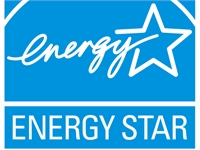
How to Conserve Energy in Your Home
Important Notice: Our web hosting provider recently started charging us for additional visits, which was unexpected. In response, we're seeking donations. Depending on the situation, we may explore different monetization options for our Community and Expert Contributors. It's crucial to provide more returns for their expertise and offer more Expert Validated Answers or AI Validated Answers. Learn more about our hosting issue here.

How to Conserve Energy in Your Home
You must be logged in to post a comment.
Energy conservation is both environmentally and economically friendly. Employing energy conservation methods in your home can can potentially save you hundreds or even thousands of dollars a year, and it can also significantly improve the efficiency in your home. There are numerous steps you can take to conserve energy in your home. Some of which can easily be done without having to spend any money. Some of the steps that you can take can have an initial cost, but they will end up paying for themselves in the long run.
Reduce water consumption
Doing things like taking showers instead of baths, turning off the water when you shave or brush your teeth and filling the sink with water instead of running the faucet when you are doing the dishes can save you a lot of money on your water bills. Purchasing items such as on-demand water heaters, low-flow toilets and low-flow shower heads can save you money without having to compromise on efficiency.
Unplug electronic devices when not in use
Even when many of your electronic devices are off, they are still using electricity. Sometimes referred to as standby or vampire power, many older electronic devices can use several or even tens of watts each even when they are off. Devices like coffee makers with built-in clocks and computers with multiple speakers can drain off electricity without you even realizing it. Anything that has little glowing LEDs in the off position is still draining power from the walls. Even large appliances with digital displays can drain energy when they are not in use. Until the government changed regulations on standby power consumption in 2010, the energy consumed by standby power often amounted to at least 10% of a household’s total electricity consumption. Unpluging these unnecessary devices when they aren’t in use can save you significant amounts of money in the long-term.
Switch to energy efficient lighting
If you have ever had the unfortunate experience of touching a standard incandescent light bulb after it has been on for a while, you have likely learned the hard way that they get pretty hot. That heat is actually wasted energy. What electricity that is not being used to produce light in the light bulb is being expelled as heat. Not only does this heat waste energy, but it can even raise the temperature in a room by several degrees. Switching to LED or compact fluorescent light bulbs can significantly reduce energy consumption and reduce heat output to the rooms in your home. Even if you aren’t ready to transition to energy efficient lighting, simply turning off the lights when you leave a room can save you money on your electric bill.
Properly insulate your home
Insufficient insulation in your home can lead to higher heat costs in the winter and higher cooling costs in the summer. Proper insulation can dramatically reduce the amount of wasted energy in your home. The attic is the biggest culprit in energy loss when there is an insufficient amount of insulation. Poorly insulated doors and windows are also major contributors to energy loss in the home. Putting clear plastic sheeting on your windows can reduce heat loss in the winter.
Adjust your thermostat
Adjusting your thermostat as little as two degrees can save you a significant amount of money in both heating and cooling costs in your home. It is much less expensive to wear a long sleeve shirt or sweater in the winter and shorts and a tee shirt in the summer than to compensate by adjusting your thermostat. Installing a programmable thermostat can also save you money in the long run. Something as simple as opening windows in the summer instead of turning on the air conditioner can save you money in energy costs as well.
Purchase Energy Star appliances
Energy Star appliances are designed to be much more energy efficient than older appliances. Energy Star appliances are appliances that adhere to strict energy efficiency criteria established by the US Department of Energy and the US Environmental Protection Agency. All Energy Star appliances are labeled with the Energy Star Label. Purchasing Energy Star appliances can also qualify you for rebates or tax deductions when used to replace older and less power efficient appliances.
Cover Photo – Public Domain: Energy Star Logo by US Environmental Protection Agency